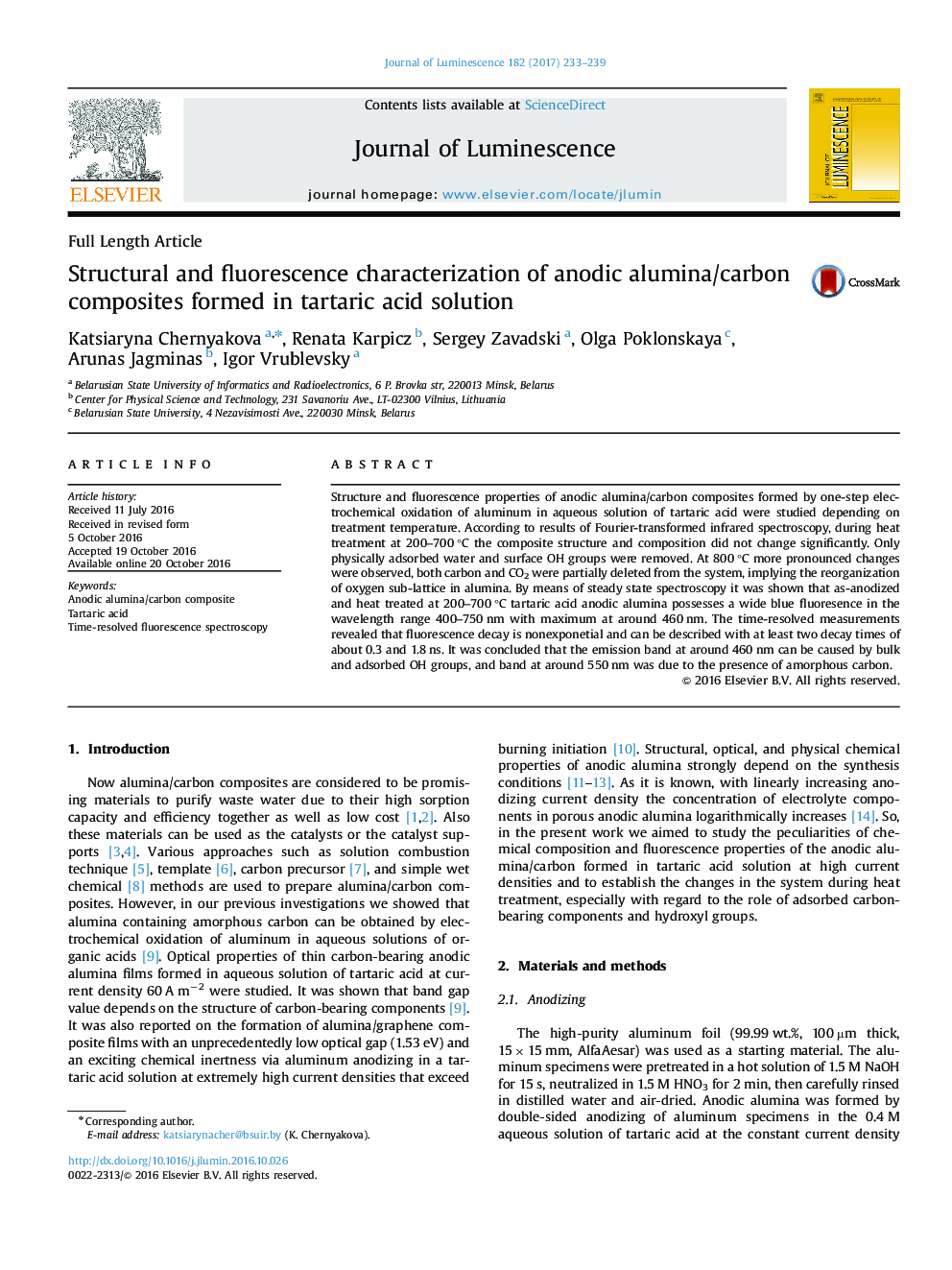| Article ID | Journal | Published Year | Pages | File Type |
|---|---|---|---|---|
| 5397987 | Journal of Luminescence | 2017 | 7 Pages |
Abstract
Structure and fluorescence properties of anodic alumina/carbon composites formed by one-step electrochemical oxidation of aluminum in aqueous solution of tartaric acid were studied depending on treatment temperature. According to results of Fourier-transformed infrared spectroscopy, during heat treatment at 200-700 °C the composite structure and composition did not change significantly. Only physically adsorbed water and surface OH groups were removed. At 800 °C more pronounced changes were observed, both carbon and CO2 were partially deleted from the system, implying the reorganization of oxygen sub-lattice in alumina. By means of steady state spectroscopy it was shown that as-anodized and heat treated at 200-700 °C tartaric acid anodic alumina possesses a wide blue fluoresence in the wavelength range 400-750 nm with maximum at around 460 nm. The time-resolved measurements revealed that fluorescence decay is nonexponetial and can be described with at least two decay times of about 0.3 and 1.8 ns. It was concluded that the emission band at around 460 nm can be caused by bulk and adsorbed OH groups, and band at around 550 nm was due to the presence of amorphous carbon.
Related Topics
Physical Sciences and Engineering
Chemistry
Physical and Theoretical Chemistry
Authors
Katsiaryna Chernyakova, Renata Karpicz, Sergey Zavadski, Olga Poklonskaya, Arunas Jagminas, Igor Vrublevsky,
